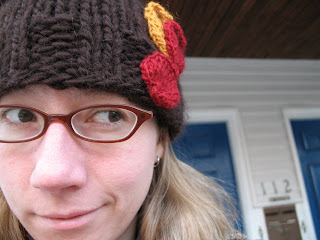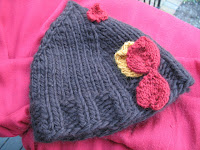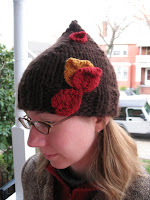Book Review: The Brief History of the Dead
The Brief History of the Dead
by Kevin Brockmeier
Quickie Synopsis: In the city of the dead, life for the recently departed continues much as, well, life for the living. Restaurants are visited, jobs are attended to, new loves and old become reacquainted. The real plus side is that there's no need to worry about such trivial human concerns like eating well or exercising since you're already dead. And you suddenly have all the time you ever desired to stroll in the park or catch up on your reading. The city of the dead is a kind of holding area--you have definitely died, but you haven't quite yet left earth. There are still people down there who remember you and hold on to you. Until all the people you know have also died, you will stay in the city. And when the last person who remembers you dies, you disappear from the city, and none of the deceased residents knows where you disappear to.
On Earth, it is a time of war, of terrorism, of environmental collapse. Large groups of people appear and disappear suddenly in the city--gradually it is realized that no one left on Earth to remember the dead. As the population of the city slowly stabilizes again, a connection is discovered among the remaining residents: they all know or are somehow connected to a woman named Laura Byrd. And on Earth, Laura Byrd is struggling for survival. She is trapped in Antarctica, alone, running out of supplies, and unaware that she may very well be the last human on Earth.
-----
In The Brief History of the Dead, Kevin Brockmeier explores two classic philosophical questions: "What happens after we die?" and "What if you were the last person left on earth?" Each question follows its own thread, but the narratives weave through each other with a musical grace until the two are finally twined into a single inevitable piece. Neither story is quite strong enough to stand on its own, but when combined, they represent a moving and powerful whole.
Some of the most impressive writing in this novel comes in the character of Laura Byrd. Laura is an unlikely heroine for this novel. She is a mid-level employee at the Coca Cola Corporation and has been sent by her employer to Antarctica as part of a publicity campaign. She is billed as the team's wildlife expert, but she herself readily admits that her expertise in that area is rather lacking. Alone in the arctic desert and cut off from any other humans, she doesn't possess a great deal of survival knowledge, and endures mainly by virtue of fancy space-age equipment and her own tenacity to live. She is quirky and immensely lovable, reacting to situations in much the same way we might imagine ourselves reacting if we suddenly realized that we were trapped in an arctic science station while an epidemic was killing off the rest of humanity. Most significantly, we see Laura grow and develop as she reacts to new situations and new realizations about the reality of her situation. Brockmeier has created Laura's character to perfection.
And in stark contrast to Laura Byrd's high-action adventure, the segments of the novel that take place in the city of the dead have a dreamy, reflective quality. The newly dead are rediscovering what they loved about living and realizing that they have been given a second go-around at pursuing their dreams. Brockmeier meditates on what connects us to each other, crafting mini-stories that profile different residents of the city who are both close to and only loosely connected to Laura Byrd. While the movement and story of the city of the dead isn't as plot-driven or presented in the same sharp detail as Laura's story, the city is the necessary backdrop that gives Laura's story added substance and consequence.
Still, there were some aspects of this book that left me severely wanting. Take the title: The Brief History of the Dead. What did Brockmeier intend by calling this book a 'history'? Because it's not; it's really more of a "Brief Story of What's Happening to the Dead." Or "The City of the Dead: A Guidebook." One of the whole points of Brockmeier's version of the afterlife is that it's relatively timeless. There are days and nights, there are tomorrows and yesterdays, people come and leave the city, the weather fluctuates--but there prevailing understanding is that time is suspended. The inhabitants of the city are waiting. Nothing ever really happens in the city of the dead--no revolutions or political shenanigans, there are no famines or environmental disasters, no major inventions or leaps of humankind. In short, nothing happens to MAKE history. I toyed with the idea that the author is being ironic and is trying to emphasis the lack of history in the book by including it in the title. But really, I think he got lazy. I think he thought of a great title for a book a long time before writing it and clung to that title even as the book he was writing changed and grew to the point where the title was no longer the right fit. (P.S. Any grammar geeks out there want to have a go at discussing the significance and merit of calling this "THE history" as opposed to "A history"?!...Or perhaps I should say "AN history"....)
And let's talk about the city of the dead. This is an interesting idea: a city (just the one) like a cosmic waiting room where the dead go after their bodies have died but they are still half-alive in the memories of the people they knew on earth. It makes sense that these recently departed still have attachments to their earthly selves--their jobs, their hobbies, the idea that they need to eat, and so on. This idea inevitably led to some obvious holes in the conceptualization of the city--holes that I at first took to be intriguing intellectual puzzles, but with which I became increasingly frustrated as either they remained unresolved or they were resolved in a way that only let to more puzzles.
For instance, take the concept of money. At first I thought that there was no money in the city and everything operated on the Utopian ideal of plenty-for-all. But toward the middle of the book, there is a scene where a woman throws coins at another resident of the city because she thought he was begging. Aha! Money after all! But then: why? Why is there money? Where does it come from? What does it represent--is there a ghostly Fort Knox somewhere? How do people get it? Are there banks?
And where does the 'stuff' come from? Who makes the coins and where does the metal come from? Where do things like paper come from--paper to print the newspapers and book all the dead are reading? Where does the food come from? Are there fields being harvested somewhere in the land of the dead, somewhere off-screen? Or does food appear by magic in the larders of the restaurants and kitchens of the city? Maybe when the living back on earth think about food, food also appears in the land of the dead--spirit food! And do the dead actually need to eat anyway, or is it just force of habit?
At one point, one of the characters notices that the trash hasn't been picked up yet, which immediately made me wonder, "Who is choosing to spend their afterlife as a trash collector?" Maybe the dead don't get a choice. Maybe they automatically just do what they were doing when they died--whether they were a child or a retired person or a stockbroker. Maybe the whole technical operation of the city relies on the fact that people of all ages die and therefore the city of the dead has enough diversity to sustain all its functions.
The further I got into the book, the more these kinds of questions bugged me and distracted me from the story. I'll grant you that Brockmeier MAY have left these kinds of details intentionally ambiguous in an attempt to draw attention to the fact that we in the land of the living don't always have a good idea of where our goods come from and we often treat them as if they appeared by magic. That's possible. But I think not.
But just as with my suspicion with the title, my gut feeling is that Brockmeier got lazy. I don't think that Brockmeier knew the answers to these ambiguities and inconsistencies any more than the reader does. As any writer worth his or her salt knows, the writer needs to know every last detail of their story down to the color of Timmy's shoelaces and how many stoplights Mr. Jones passes on his way to work. If the author is completely conscious of the world and characters he or she is describing, the necessary details will naturally float to the top and the reader will be able to fill in the rest of the blanks on his or her own. These small details of shoelaces and stoplights may never make it into the final story; but it's the fact that the author has them firmly in mind as he or she is writing that deepens the story the same way a dash of secret spice will deepen the flavor of chili and make it a better stew without anyone being the wiser. Brockmeier clearly knew Laura Byrd's character inside and out, so why didn't he apply the same level of craft to the city of the dead?
Intended or otherwise, The History of the Dead only manages a superficial, if highly entertaining, look into some of humankind's deepest questions. It's this lack of depth that ultimately keeps an otherwise well-written and well-conceived book solidly in the camp of whimsical science fiction and prevents it from becoming anything more than an interesting philosophical jaunt.
-----
Final Recommendation: Worth the read
Good Read For When You're: Waiting at the airport, on vacation, or sick on the couch looking for good distraction.
Good Choice For: Science fiction fans, precocious teenagers, and philosophy majors thinking of switching to creative writing. Oh, and book groups. This is a bone fide book group read if I ever read one.
If You Liked This Book, You Might Also Like: Eva Moves the Furniture by Margot Livesay





